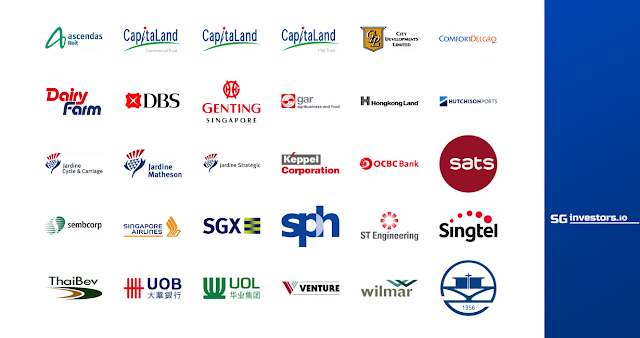Portfolio Construction : To Diversify or Not to Diversify ?
As investors, when we think about Risk-Reward
analysis, the first thing pops up in our mind automatically will be the word “
diversification”.
This is what been mentioned in Investopedia
about the importance of Diversification :
"Diversification is a technique
that reduces risk by allocating investments among various
financial instruments, industries and other categories. It aims to
maximize return by investing in different areas that would each
react differently to the same event.
Most
investment professionals agree that, although it does not guarantee against
loss, diversification is
the most important component of reaching long-range financial goals while
minimizing risk.”
There are also different types of
diversification e.g Asset class Allocation,
Diversification by Geographical and Sectors etc.
You may find out the 6 types of diversification from Investopedia :
We knew the importance of diversification but
also quite often we hear the other side of the story that diversification may have some
drawback eg, overly diversifying an investment portfolio tends to reduce
potential gains and produce only, at best, average results.
Also, during recent GFC ( Global Financial Crisis), we have seen that regardless of an asset class, most of the asset (equity, bond, commodity, real estate ) being affected and suffered from the tumbling in stock price which makes most of us question the effectiveness of diversification.
Also, during recent GFC ( Global Financial Crisis), we have seen that regardless of an asset class, most of the asset (equity, bond, commodity, real estate ) being affected and suffered from the tumbling in stock price which makes most of us question the effectiveness of diversification.
To Diversify or Not to Diversify?
So what should
novice investors do? Diversify or not diversify? Well, one has to trade off the
loss of the upside with the protection on the downside. You need to ask
yourself which is more important to you.
For most people, the pain from losing
money is felt more deeply than the joy in gaining the same amount on the upside, commonly called "loss
aversion."
If you are like that, then protecting your investment from
the downside risk is a more urgent issue. The more loss-averse you are, the
more you need to build a safety
margin for your portfolio. And diversification
is a powerful tool to build that safety margin.
More about “loss aversion “ from Wikipedia ( here ) :
“In economics and decision theory, loss
aversion refers to people's tendency to prefer avoiding losses to
acquiring equivalent gains: it's better to not lose $5 than to find $5. Some
studies have suggested that losses are twice as powerful, psychologically, as
gains. Loss aversion was first demonstrated by Amos Tversky and Daniel Kahneman.
This leads to risk aversion when
people evaluate an outcome comprising similar gains and losses; since people
prefer avoiding losses to making gains.”…….
Other than “Risk
tolerance “, the diversification strategies will also be determined by your
stage of investment cycles, eg, in the early stage of wealth accumulation, one may
have a more concentrated portfolio but towards retirement age, a more
diversify portfolio may have peace of mind although with less potential of
growth or capital appreciation.
No doubt that
diversification is a good thing but building a diversified portfolio has never
been easier for individual investors.
How about your story of portfolio diversification?
Cheers!
Quote Of The Day :
"Every once in a while, the market does something
so stupid it takes your breath away." - Jim Cramer
My way of diversification: A “Kiasu “ Equity Portfolio :
You may
notice that I have a diversified portfolio ( latest update here
) with 48 stocks in total, although not in sectors wise where I try
to reduce my exposure in REITs and Business Trust in the last two years, where I
have blogged about it – here
(part 1) and here
(part 2) .
As I
mentioned before, a few multi-bagger stocks in my portfolio may not change the
overall return much since I am allocating less than 10% of my capital in each
counters.
Similarly,
my top 5 worst performance in my portfolio ( with negative return ranging from -7% to -17% ) only constitute about
8.7% of my total portfolio. If any of these company goes “kaput “, it will not have a severe
impact on my overall portfolio value, hence allow me to sleep well.
Detail of my
“Kiasu “ Portfolio as below :






Comments
Post a Comment